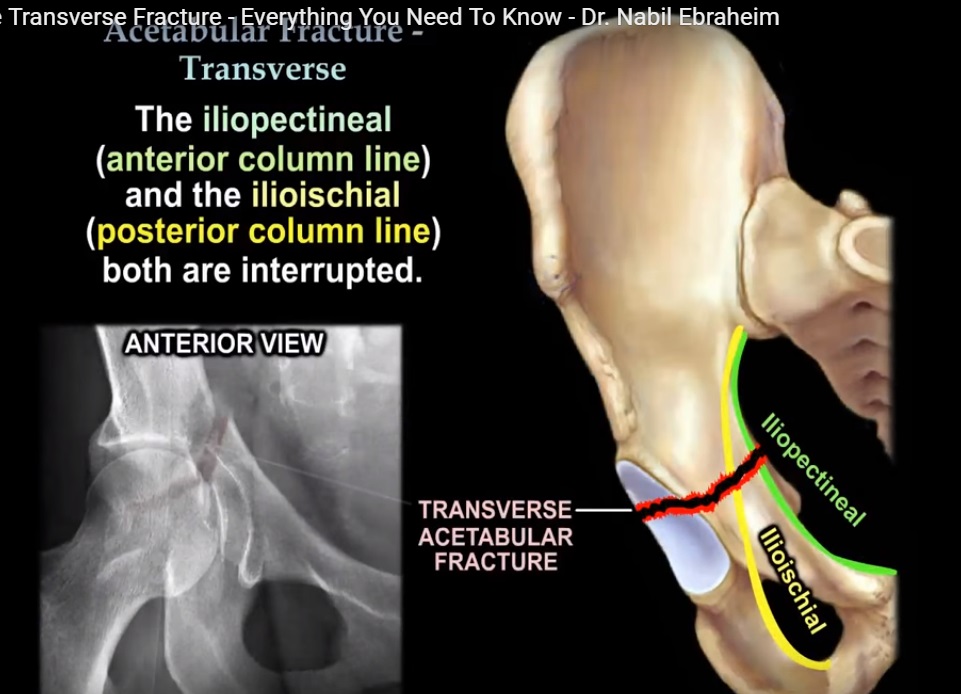

The fracture plane travels horziontally through the hemipelvis, disrupting the iliopectineal and ilioischial line, and separates it into superior and inferior fragments. True transverse acetabular fractures represent approximately 10% of all acetabular fractures. Sagittal CT image through the acetabulum, lateral to medial. Black arrows denote a horizontally-oriented fracture through the acetabulum not involving the iliac wing or ischiopubic ramus. Transverse-posterior wall and T-type fractures No fracture is seen at this level.įracture Line on Axial Images of the Tectum The iliac wing is intact.Īxial CT image of the pelvis through the left ischiopubic ramus. Black arrows denote a sagittally-oriented fracture plane through the acetabulum.Īxial CT image of the pelvis through the sacroiliac joint.

Red arrows denote a horizontally-oriented fracture dividing the acetabulum into superior and inferior halves.Īxial CT image of the pelvis through the left acetabular tectum. Lateral view of a 3D volume-rendered reconstruction of the hemipelvis with the femur removed. Interactive CT Anatomy Learning Module | University of Washington Demystifying the Letournel-Judet Classification


 0 kommentar(er)
0 kommentar(er)
